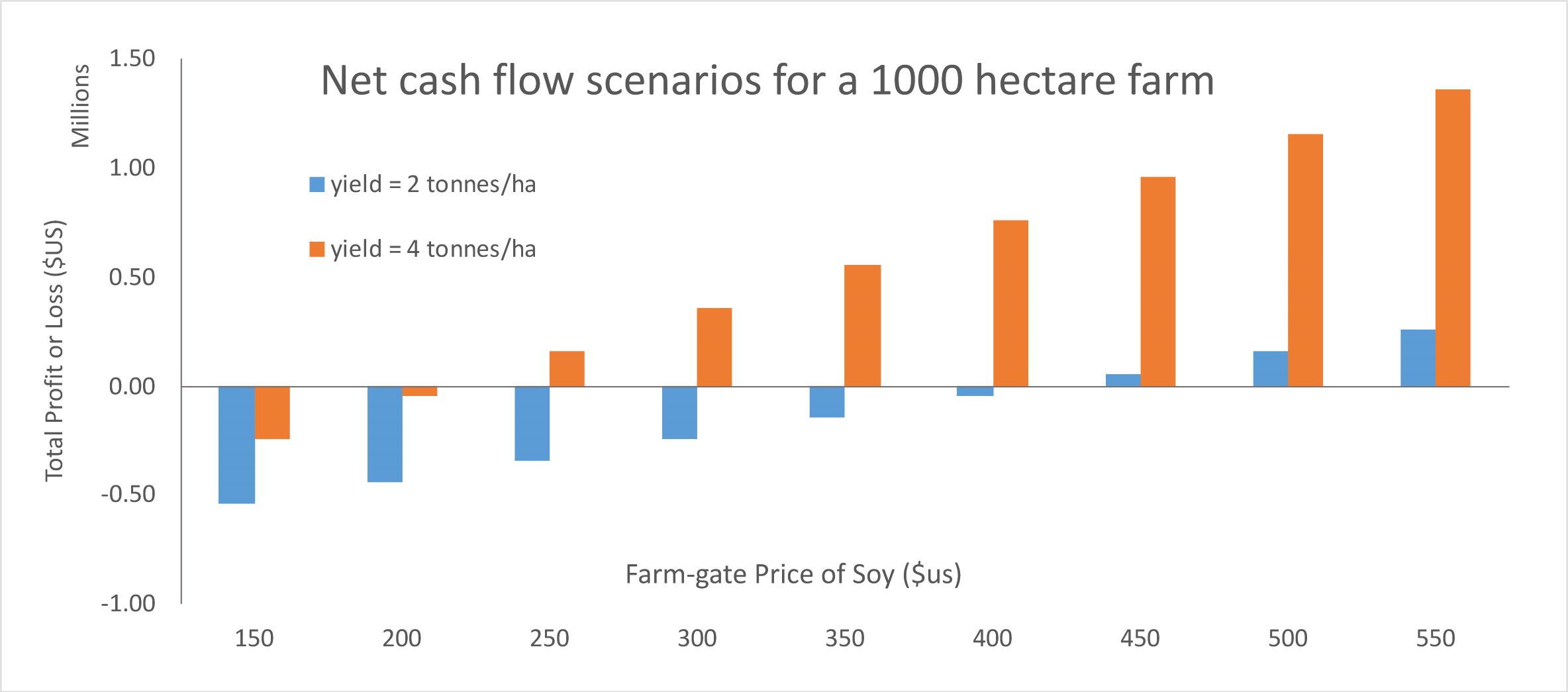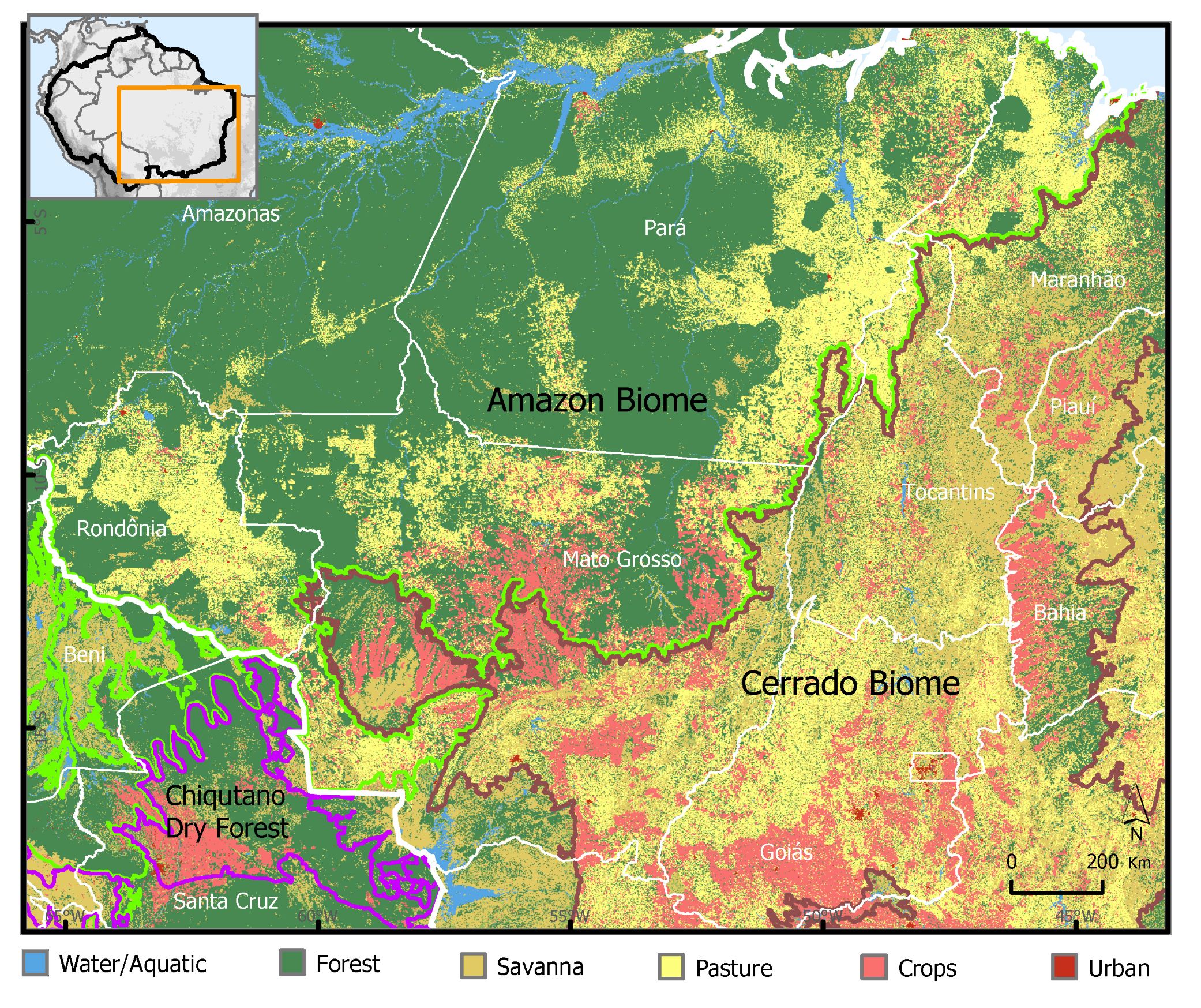- Mongabay has begun publishing a new edition of the book, “A Perfect Storm in the Amazon,” in short installments and in three languages: Spanish, English and Portuguese.
- Author Timothy J. Killeen is an academic and expert who, since the 1980s, has studied the rainforests of Brazil and Bolivia, where he lived for more than 35 years.
- Chronicling the efforts of nine Amazonian countries to curb deforestation, this edition provides an overview of the topics most relevant to the conservation of the region’s biodiversity, ecosystem services and Indigenous cultures, as well as a description of the conventional and sustainable development models that are vying for space within the regional economy.
- Click the “A Perfect Storm in the Amazon” link atop this page to see chapters 1-13 as they are published during 2023.
The most important production system in the Pan Amazon when measured by GDP is the cultivation of annual crops: particularly soy, but also maize, rice, sorghum, wheat and cotton. In Brazil and Bolivia, annual cropping is organized around soy, because export markets provide the potential for a very substantial return on investment.
Industrial-scale farming is much riskier than cattle ranching because it requires a considerable capital outlay to sow and harvest a crop. A successful harvest depends upon weather, which is unpredictable, and price, which is determined by commodity markets that are notoriously volatile. A poor harvest during the bottom of the commodity price cycle can bankrupt a farmer, especially those that are overly reliant on short-term credit to finance operations. The increase in risk is offset, however, by the potential return.
The cost of production in 2020, including fuel, fertilizers, pesticides, labor and on-farm operations was approximately $US 700 per hectare in Mato Grosso. Yields range between two to four tonnes per hectare, while the international price of soybean has fluctuated between $US 200 and $US 600 per tonne since 2000. Farmers in the hinterlands of South America are paid a discounted price that reflects the cost of transport to the export terminal, where it is loaded onto ocean-going grain ships (see Chapter 2). In a good year, soybean farmers can double their money, but in a bad year, some will go bankrupt. Although these back-of-the-envelope calculations do not include capital investments in farm equipment or land, they do reveal the risk-reward potential of the industry.

Although the cultivation of soy is lucrative, it can be grown only in rotation with other crops, due to the proliferation of plant pathogens in monoculture production systems. Farmers in both Bolivia and Brazil sow two crops per year, which also allows them to spread climate risk between a summer (wet season) and winter (dry season) harvest. Many opt to plant a cover crop for one of the two cropping seasons; this allows them to improve the organic matter in the soil as well as reduce the risk from pest outbreaks.
Farmers increasingly are choosing to cultivate a feed grain as a rotational crop because it can improve their bottom line and diversify their market opportunities. Maize is the most common rotational crop in Brazil, while drought-tolerant sorghum is preferred in Bolivia. The rotation of soy with feed grains has brought substantial benefits to the farm economy because it has increased the supply and affordability of feed rations for poultry and swine.
The expansion of the soy/maize production model continues apace in the Brazilian Amazon and Bolivia. There have been dips in production, but overall, the sector has expanded its spatial footprint year after year for more than forty years. In Mato Grosso, mean yields have increased from around 3.1 in 2000 to 3.5 tonnes per hectare in 2019; producers in Bolivia tend to use less fertilizer and other inputs and average between 1.8 to 2.2 tonnes per hectare. Mato Grosso produces about 27 per cent of Brazil’s total soy crop, a proportion that has remained stable over the last decade, although total production has increased by 50% since 2010.
The municipalities that produce the most are Sorriso, Nova Mutum and Nova Ubiratã, which are situated along BR-163, or Diamantino, Sapezal, and Campo Novo do Parecis, which are located further west along BR-364 (HML#15).
Farmers in each of these municipalities harvested between one and two million tonnes of soy in 2019. Expansion has been most pronounced in the municipalities associated with BR-158, where soy plantings expanded by 500,000 hectares between 2016 and 2019. A similar phenomenon is underway in Tocantins, northeast Pará and Maranhão to take advantage of the lower transportation costs provided by the Ferrocarril Norte-Sul.

Landscapes with the highest rate of conversion to soy include several located in north-central Mato Grosso, where farming became more attractive following the paving of BR-163. Similarly, the proliferation of soy cultivation in municipalities adjacent to the river ports on the Madeira, Tocantins, Tapajós, Xingu and Amazon rivers reflects investors’ desires to improve returns by lowering transportation costs; more surprising, and worrisome, is the installation of soy fields in remote municipalities of the northern Amazon.
The cultivation of soybeans in the Brazilian Amazon was linked by academics and journalists to deforestation in the early 2000s when annual deforestation in the Brazilian Amazon surpassed 2.5 million hectares per year. The revelation of soy-related deforestation happened to coincide with a period when European imports of soy from Brazil reached an all-time high of fifty million tonnes per year. The public linkage between soy and Amazonian deforestation led to a high-profile campaign by Greenpeace and other NGOs, which led to the Soy Moratorium.

The Soy Moratorium contributed to and coincided with a multi-faceted policy, referred to as the PPCDAm, which was organized by the administration of Lula da Silva to reduce deforestation in the Brazilian Amazon. The declines were particularly impressive in Mato Grosso, where forest clearing by farmers fell to near zero, a success story essential for the future of one of Brazil’s most important export industries. Nonetheless, the actual land-use change associated with the expansion of soy/maize production model is a more nuanced story.
Of the approximately 10 million hectares of soy planted in Mato Grosso in 2020, about 30% was cultivated on land originally covered by forest vegetation, while the other 70% was established on landscapes within the Cerrado savanna biome.
In neither case, however, was conversion always a direct operation that cleared native vegetation to establish a working soybean farm; approximately 75 per cent of the land involved was first cleared to plant pasture grasses as part of a beef production operation that was subsequently converted to the cultivation of annual crops. Farmers expand via the conversion of pasture rather than forest because it is more cost-effective. Forest properties tend to be more remote, which increases transportation costs, and clearing them requires contracting heavy machinery. The business preference of farmers coincides with the interest of cattle ranchers who decide to monetize the capital appreciation they had obtained by being early-stage pioneers. Some ranchers relocate to forest frontiers where land is cheap.

In 2016, the amount of pasture in Mato Grosso was estimated at approximately 20 million hectares, while total cropland was reported to be ten million hectares. Most analysts project that the soy/maize production model will continue to expand and pasture area will decrease over the short term. Within Mato Grosso, that expansion is most likely to occur in the northern tier of municipalities (Human Modified Landscapes #16) where (1) landscapes are well-suited for mechanized agriculture because they have flat topography and deep, well-drained soils, and (2) land is privately-owned and farmers can expand into the region without violating the criteria of the Soy Moratorium.
The construction of the Ferrograu will likewise catalyse the expansion of intensive agriculture into these previously remote landscapes that will have an advantage due to lower transportation costs. Similarly, if the Ferrovia Paraensis is extended south to the border between Mato Grosso and Pará, the cattle ranching landscapes along BR-158 will most likely be converted into farmland.
Land-use change also impacts the watersheds that drain these landscapes. Both deforestation and Cerrado conversion degrade the physical properties of topsoils, which makes croplands susceptible to surface erosion and increases lateral transport of nutrients to the stream network. This increases the potential for eutropication in aquatic habitats due to nitrogen enrichment from the use of fertiliser or nitrogen-fixing crops such as soy. Pesticides are present throughout the entire aquatic system, sometimes at levels that may pose serious health risks. The growing adoption of centre-pivot irrigation systems threatens to seriously diminish water flows, particularly in the Tapajos basin.
In Bolivia, the expansion of soy is largely the consequence of direct deforestation, which includes not only humid forests forest near the Andean foothills but also the seasonal and dry forests of Chiquitania and the Gran Chaco. Unlike Mato Grosso, where the conversion of pasture to cropland predominates, the expansion of soy cultivation can be directly linked to new deforestation. The expansion of the farm sector has been a top priority of successive governments, including that of Evo Morales, who adopted a policy to double the area under cultivation by 2025.

In spite of the favorable policies, expansion is constrained by the realities of farming in Bolivia. Producers face significant risk linked to weather, as well as challenges linked to poor secondary road infrastructure, inadequate storage facilities and contradictory government policies that limit the use of genetically modified organisms.
Bolivian producers can compete in export markets due to fertile soils and inexpensive land, both of which are the consequence of the expanding agricultural frontier. They also benefit from a multi-modal bulk transport system (rail and waterway), which mitigates the high cost of transport that is a consequence of their geography.
“A Perfect Storm in the Amazon” is a book by Timothy Killeen and contains the author’s viewpoints and analysis. The second edition was published by The White Horse in 2021, under the terms of a Creative Commons license (CC BY 4.0 license).
Read the other excerpted portions of chapter 3 here:

Chapter 3. Agriculture: Profitability determines land use
-
- Agriculture: profitability determines land use October 10, 2023
- Agriculture in the Pan Amazon: Beef production models October 11, 2023
- Industrial infrastructure in the Pan Amazon October 17, 2023
- National versus global markets – beef in the Brazilian Amazon October 19, 2023
- Livestock farming in the Andean Amazon and the rest of the Amazon October 24, 2023
- Intensive agriculture in the Pan Amazon: Soy, maize and other field crops October 25, 2023
- Agriculture in the Pan Amazon: Global markets for soybean and corn crops October 31, 2023
- Agriculture in the Pan Amazon: Industrial infrastructure for grains and cereals November 1, 2023
- Agriculture in the Pan-Amazon: Swine and poultry – Adding value to farm production November 8, 2023
- Oil palm in the Pan Amazon November 9, 2023
- Palm oil cultivation in Colombia, Ecuador, Peru and Brazil November 13, 2023
- What does oil palm require to reach international markets? November 14, 2023
- Biofuels in the Pan Amazon November 21, 2023
- Coffee and cacao in the Pan Amazon November 22, 2023
- Cultivation and processing of Amazonian coffees November 28, 2023
- High quality cacao in Amazonia November 29, 2023
- Local and national food crops in the Andean Amazon December 5, 2023
- Coca in the Amazon – The anti-development crop December 6, 2023
